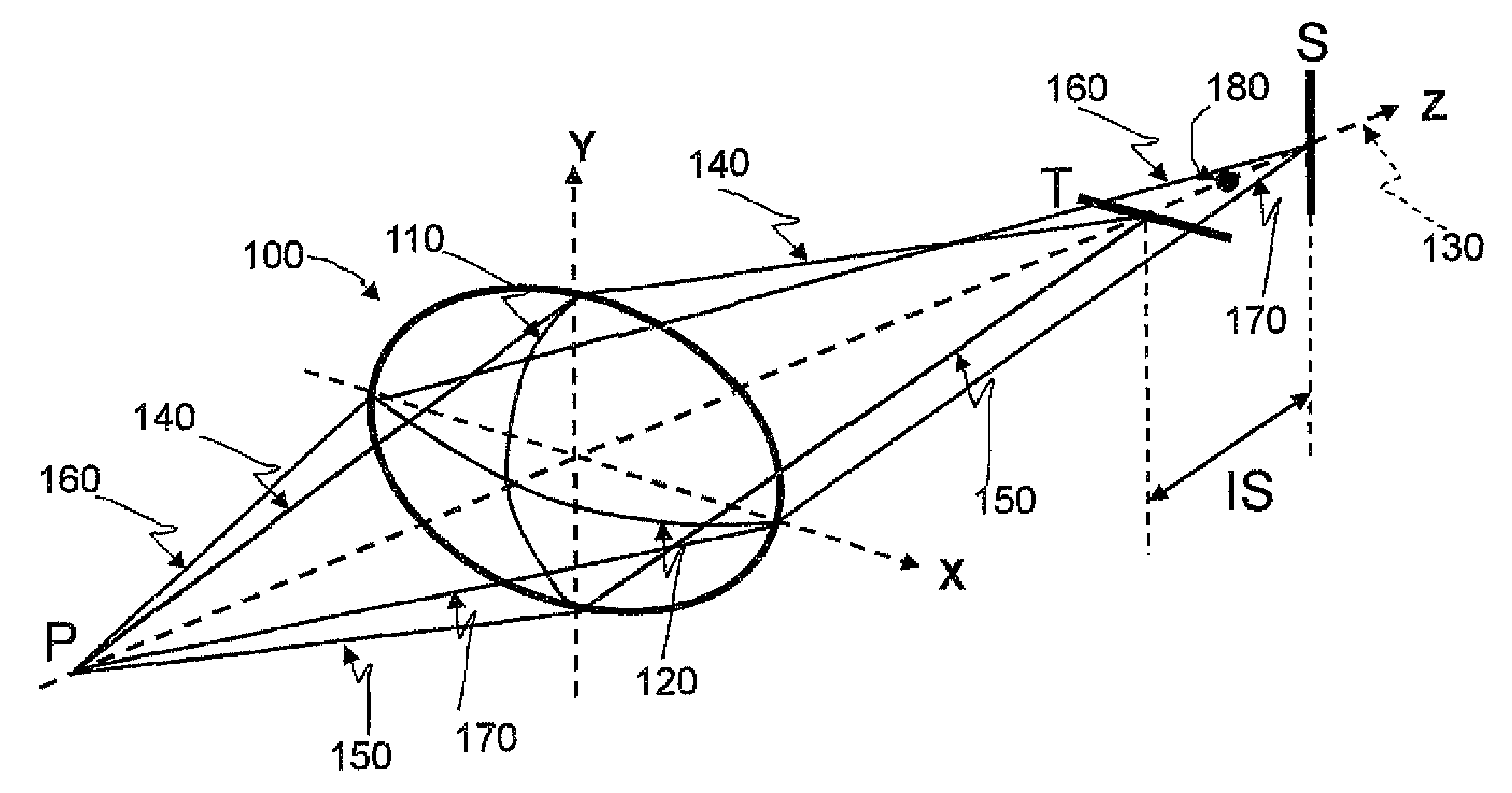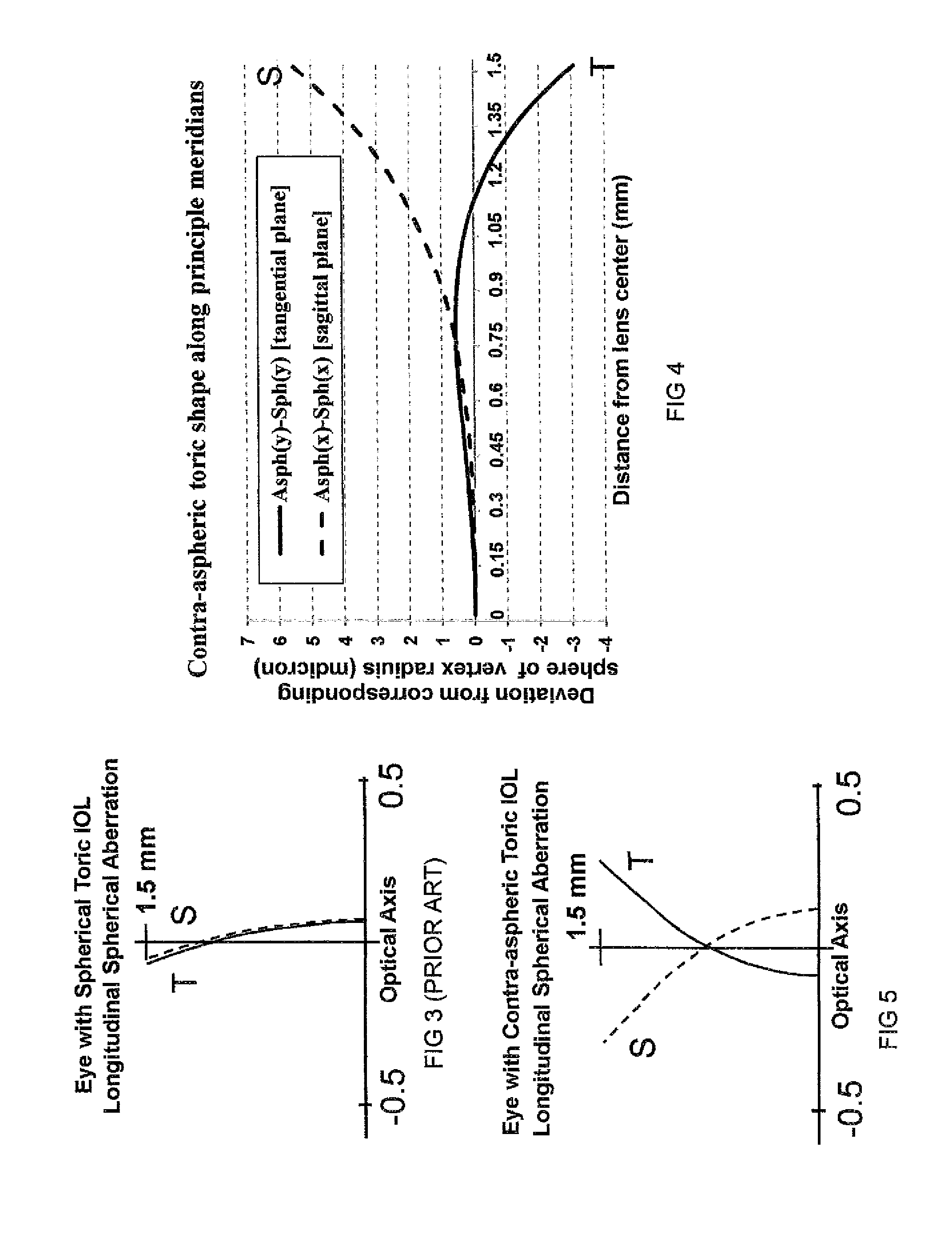Contra-Aspheric Toric Ophthalmic Lens
a toric ophthalmology and concentric lens technology, applied in the field of toric ophthalmology, can solve the problems of difficult to achieve perfect meridional alignment, null ocular astigmatism or cylinder refraction error, etc., to increase the circle of least confusion, reduce image quality, and increase overlap
- Summary
- Abstract
- Description
- Claims
- Application Information
AI Technical Summary
Benefits of technology
Problems solved by technology
Method used
Image
Examples
Embodiment Construction
[0069]FIG. 1 illustrates a toric surface configuration suitable for use as a contact lens, intraocular lens, single element lens or a multiple element lens. The optical axis coincides with Z-axis and the shortest radius Ry (steepest curvature) is along y-axis that coincides with tangential meridian and the longest radius Rx (flattest curvature) is along x-axis that coincides with sagittal meridian. The toric surface 100 is characterized by the principle meridians along the steepest curvature, 110, and flattest curvature, 120. In a spheric toric lens, Ry and Rx are constant along the corresponding principle meridians and the in an aspheric toric lens Ry and Rx are variable, that is, the toric surface has an aspheric cross section at the tangential or y-axis and sagittal meridians or x-axis of the described configuration commonly used for analysis by an optical design software such as Zemax for instance.
[0070]Toric surface Cylinder is defined by the difference in dioptric power betwee...
PUM
 Login to View More
Login to View More Abstract
Description
Claims
Application Information
 Login to View More
Login to View More - R&D
- Intellectual Property
- Life Sciences
- Materials
- Tech Scout
- Unparalleled Data Quality
- Higher Quality Content
- 60% Fewer Hallucinations
Browse by: Latest US Patents, China's latest patents, Technical Efficacy Thesaurus, Application Domain, Technology Topic, Popular Technical Reports.
© 2025 PatSnap. All rights reserved.Legal|Privacy policy|Modern Slavery Act Transparency Statement|Sitemap|About US| Contact US: help@patsnap.com



